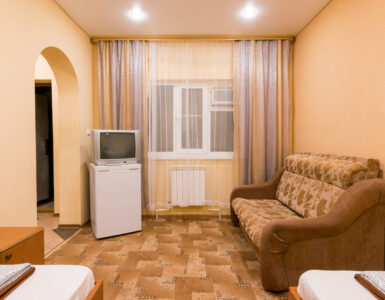To alleviate these financial concerns, the federal government has established the Low-Income Home Energy Assistance Program (LIHEAP) to offer subsidies for power bills.
This program was established in 1981 and is handled by the Department of Health and Humans Services (HHS), which allocates funding to all fifty states so that they can make this type of financial aid available. In this guide, we offer relevant information on what are the requirements to qualify for LIHEAP, and how to apply.
Benefits of Home Energy Assistance
The Low-Income Home Energy Assistance Program (LIHEAP) offers a variety of benefits and services that are slightly different in each state. However, most of the benefits can be grouped into three categories: financial assistance with power bills, emergency relief in crisis situations, and support for families who desire to make their homes more energy efficient.
Financial aid awarded for cooling and heating is determined by gross annual income, number of people in the household, and size of the home. Other factors might include type of fuel or related statistical data. More benefits are allocated to elderly and disabled people.
For example, a family of three from North Dakota in a three bedroom house with annual income of $5,000. The formula used by the state’s Department of Human Services dictates that, if the family reports $1,000 on power bills each year, they would have to cover $200 while the LIHEAP program subsidizes the remaining $800. This means that the family would only have to set aside 4% of their annual income to cover 20% of their power bills.
The subsidy only covers cooling and heating bills. Water and sewer bills are not part of the LIHEAP program. An exception is made for families that rely on water for air conditioning. Some states provide money to cover only a house’s main heating source. A family that relies on gas to heat their home may get support to pay only their gas bill instead of all their power bills.
LIHEAP recipients can use a portion of their awarded funds towards making a home more energy efficient. The government refers to these improvements as “weatherization.” For example, people can fix leaky doors or windows, install insulation, or replace broken air conditioners. The Low Income Weatherization Assistance Program is made available by the Department of Energy to help families weatherize their homes.
How To Qualify
In order to receive the benefits of the LIHEAP program, a family must provide sufficient proof that they require financial help to cover the basic costs of powering their home. In general, a family of three must have a combined annual income of less than $30,000 to be eligible. However, some states have decided to expand the eligibility criteria to fit families that need help but do not qualify for assistance.
Each state offers a unique set of benefits in its LIHEAP program, with different criteria for each of the individual services. For example, a family may be eligible to receive subsidies for only the heating portion of their power bills. States usually have arrangements in place with local utility companies which allow them to be more flexible when allocating LIHEAP funds. People can visit the local LIHEAP office to know which benefits they qualify for.
In some states, people have the option to automatically qualify for LIHEAP benefits if they participate in other federal assistance programs such as Supplemental Nutrition Assistance Program (SNAP), Supplemental Security Income (SSI) or Temporary Assistance for Needy Families (TANF). They may still be required to fill an application form to gain access to the services. Local LIHEAP offices usually provide information about automatic qualification to residents in the area.
How To Apply
Each state manages its own application process. Families who meet their state’s requirements can find more information about the process by visiting the local LIHEAP office. Some states allow citizens to submit an online application. A member of the household will be asked to create an account at the state’s benefits website. Through account access, an applicant can track the assistance they receive. Another benefit of creating an online account, one application can enroll in other government assistance program such as food assistance or Medicaid.
LIHEAP benefits are offered in most states under a first come-first served basis. Each state is given a limited amount of money by the Department of Health and Humans Services (HHS), which means that not all families that qualify for the program will be able to receive the subsidy for their power bills. When there is a shortage of funds legislators can sponsor emergency bills to increase available funds.
LIHEAP is the government’s largest grant focused on low-income energy affordability. But it continues to be cut, in total by more than 30% since 2009. Trump has threatened to eliminate LIHEAP entirely, along with similar programs like the Department of Energy’s Weatherization Assistance Program. For now, these programs remain funded but with increasing opposition. Now is the time for anyone who may be eligible to claim the benefits.




